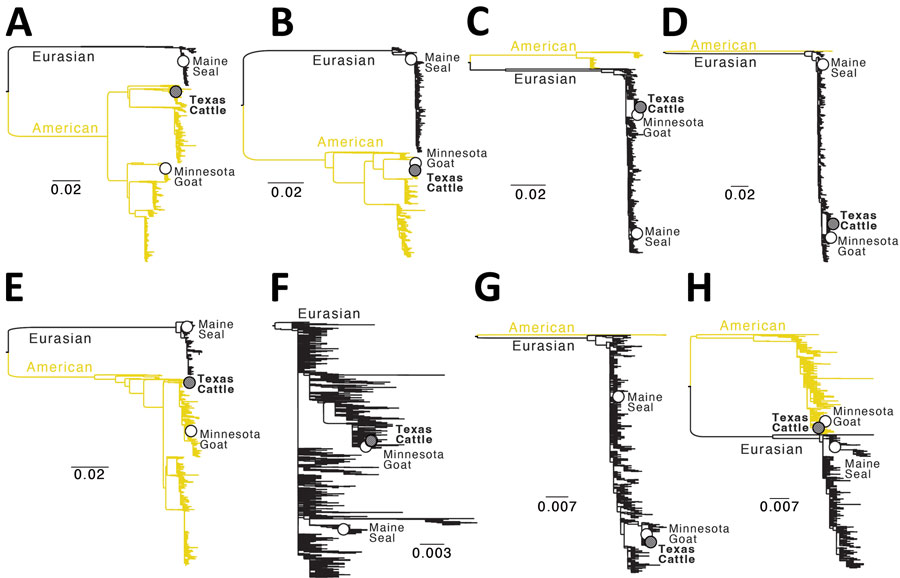Volume 30, Number 7—July 2024
Dispatch
Avian Influenza A(H5N1) Virus among Dairy Cattle, Texas, USA
Figure 2

Figure 2. Phylogenetic trees for 8 genome segments in study of avian influenza A(H5N1) virus among dairy cattle, Texas, USA. Maximum-likelihood phylogenetic trees inferred for each of the 8 segments of the influenza A virus genome, including A/cattle/Texas/56283/2024(H5N1) isolated in this study (positioned in the Texas Cattle clade defined in Figure 1) and 3516–3644 H5N1 sequences (depending on the segment) from North America and South America, collected December 21, 2021–March 28, 2024, that were downloaded from GISAID (https://www.gisaid.org) on April 10, 2024. A) Polymerase basic 1; B) polymerase basic 2; C) polymerase acidic; D) hemagglutinin; E) nucleoprotein; F) neuraminidase; G) matrix; H) nonstructural. Outbreaks in Maine harbor seals and gray seals (June 2022), Minnesota goats (March 2024), and Texas cattle/humans (March 2024) are labeled. The American and Eurasian avian influenza lineage are labeled. All branch lengths drawn to scale. Scale bars indicate number of substitutions per site.
1These first authors contributed equally to this article.